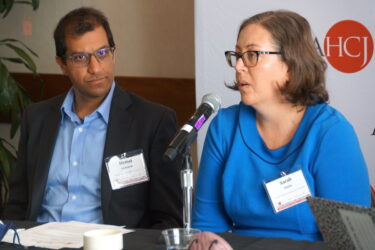 Thanks to progress credited to the Affordable Care Act, only about 11 percent of Americans lack health insurance. Yet approximately a third – more than 100 million – remain dentally uninsured, according to the National Association of Dental Plans (NADP).
Thanks to progress credited to the Affordable Care Act, only about 11 percent of Americans lack health insurance. Yet approximately a third – more than 100 million – remain dentally uninsured, according to the National Association of Dental Plans (NADP).
Dental coverage was never a major focus of the ACA. Still, some headway has been made in getting oral health benefits to more Americans since its passage.
Some obtained dental coverage through Medicaid expansion in their states. Others shopped for benefits on federal and state insurance exchanges.
It can be a little tricky to tease out exactly how many people are now getting dental benefits due to the ACA. But NADP’s executive director, Evelyn Ireland, believes the 14.7 million uptick in Medicaid dental beneficiaries that her organization has documented between 2013 and 2015 can “primarily be attributed to Medicaid expansion” under the health care reform law. As for private dental coverage for sale on state and federal insurance marketplaces, Ireland said in an email, “In 2017, the number of dental only applications through the exchanges hit 1.9 million.”
Steps taken under the ACA, including Medicaid expansion, may have helped reduce the number of dentally uninsured children by more than half, according to research by the American Dental Association (ADA) Health Policy Institute (HPI).
But oral health advocates worry about the future of these gains. They see a threat to private dental coverage in the campaign to repeal and replace the ACA.
And they worry about Republican leaders’ plans to deeply cut and dramatically revamp Medicaid, which provides health coverage to more than 70 million Americans – and dental coverage to about 54 million.
More than forty diverse groups – representing dentists, dental hygienists, nurses, and state and grassroots organizations – recently co-signed a letter to key Senate leaders considering legislation designed to roll back Obamacare.
In their June 9 letter, the groups asserted that public and private dental benefits could get lost in the shuffle ahead.
“As the Senate moves forward with health care reform, we urge you to reject drastic reductions and restructuring of the Medicaid program. We also urge you to resist the elimination of oral health services for families enrolled in private insurance plans and consider policies and guidance that would make dental services more accessible to all citizens, regardless of income or insurance type.”
But the Senate’s version of the bill, the Better Care Reconciliation Act (BCRA), released since the letter was sent, did not reassure Deborah Vishnevsky, a policy analyst for the nonprofit Children’s Dental Health Project.
“This bill retains many of the problematic provisions of the American Health Care Act she wrote in a June 26 blog.
The fate of dental coverage under Medicaid is a major concern for Vishnevsky and other advocates. According to a Congressional Budget Office analysis, states would lose $772 billion in federal Medicaid funds by 2026, a step that could easily make dental benefits vulnerable to cuts.
Cheryl Fish-Parcham, in a June 27 blog for Families USA had this to say:
“Congressional proposals to cut and cap Medicaid will put enormous pressure on states to cut services – and will make it nearly impossible to for states that now have gaps in their coverage to ever catch up. The struggle to provide oral health care illustrates this problem.”
The future of Medicaid’s Early and Periodic Screening, Diagnosis and Treatment (EPSDT) program, which has entitled poor Medicaid children to a full range of dental services for the past 50 years also hangs in the balance, advocates warn.
“The BCRA would permit states to convert Medicaid to a block grant for certain populations, including children,” wrote John Auerbach in a June 27 blog for Health Affairs.
“States approved for this block grant option would no longer be required to cover the EPSDT which allows children to receive comprehensive screenings … immunizations, laboratory tests … vital health education, and vision, dental and hearing services.”
Still, the NADP’s Ireland believes there is a bit of hopeful news for Medicaid adult dental benefits to be found in the BCRA’s block grant option.
“BCRA actually requires the inclusion of ‘non-cosmetic dental services’ to all populations served under block grants. It is the only place the bill mentions dental. If states go that direction, some portion of adults should keep services,” Ireland noted in an email.
She said she thinks that states increasingly see the importance of preserving dental benefits for their poorest adults.
“Even under per capita caps, states are beginning to see the value of maintaining dental benefits for adults to help lower medical treatment costs for chronic conditions. So, no one knows whether they would entirely cut these services to the adult population.”
For more about this, see this new tip sheet.








